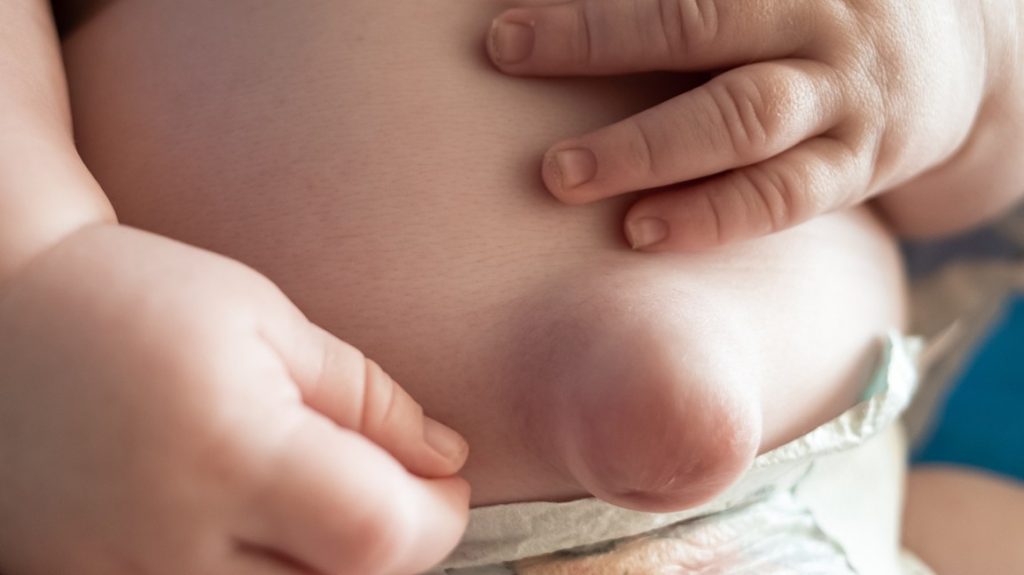Every mom wants a healthy baby and when abnormalities occur in babies, it’s always a course of concern.
It is irritating when a bump forms around a newborn’s navel for no apparent reason.
While this is harmless in most cases, the condition is known as umbilical hernia, and you should know how to deal with it.
You should not be worried about your baby’s umbilical hernia but should seek medical attention, especially when the umbilical hernia is getting bigger.
Symptoms and Diagnosis of Umbilical Hernia
An umbilical hernia is harmless in itself, however, parents should seek medical attention for examination and management.
The symptoms of an umbilical hernia are swelling around the navel or bulge which becomes bigger and harder as the baby cries, coughs, or does anything that exerts pressure on the abdomen.
Your doctor would need to palpate your baby lying on his back with their hands to determine the diameter of the umbilical hernia and whether any parts of the intestine are trapped.
If your pediatrician suspected that the hernial sac can not go back into the abdomen on its own, the doctor will carry out a more intensive examination with the help of a stethoscope or ultrasound.
How can I prevent my baby’s Umbilical Hernia
Unfortunately, even the most caring parents cannot prevent an umbilical hernia from developing in their babies.
The over-the-counter umbilical patches are harmful to your baby’s sensitive skin and may not stop an umbilical hernia.
Particularly in preterm babies, care should be taken and the baby should be left to cry too long.
This can reduce the stress on the abdomen and the risk of an umbilical hernia.
However, even then, an umbilical hernia cannot always be completely prevented.
Anyone who is not sure whether their baby has an umbilical hernia should have it checked by a doctor.
In addition, the navel is also examined during the preventive examinations.
Umbilical Hernia Baby Treatment
Unlike in adults, the umbilical hernia grows together naturally in a baby. Increasing strength in the abdominal muscles, which develops naturally, is the best therapy.
The umbilical hernia is healed naturally and gradually by around two years of age – less often, it can be up to 5 years.
However, if a strangulated umbilical hernia occurs and it can not be pushed back into the abdomen, it is important to consult a doctor immediately for surgery.
In strangulated hernia, the blood supply to the tissue has been distorted, therefore, a careful examination is required for proper treatment (surgery)
The doctor or surgeon would check the diameter of the break, if it’s more than 1.5 to 2cm, a surgical operation is recommended.
A surgical operation is also necessary if the area turns blue, which indicates that tissue from the intestine has become trapped in the fracture site.
Then the hernia must be closed to prevent parts of the intestine from dying off.
Umbilical hernia surgery is performed on babies under anesthesia, and it takes about 15 minutes, nothing to worry about.
To operate on the umbilical hernia, a small, arched incision on the umbilicus is necessary.
It pushes the hernial sac back into the abdomen. The breakpoint is then sutured so that organs or tissue can no longer escape.
Finally, the incision is sewn up intracutaneously. The small wound is usually no longer visible after a few months and the child can often be discharged home on the same day.
For children, umbilical hernia surgery is usually performed before they start school.
